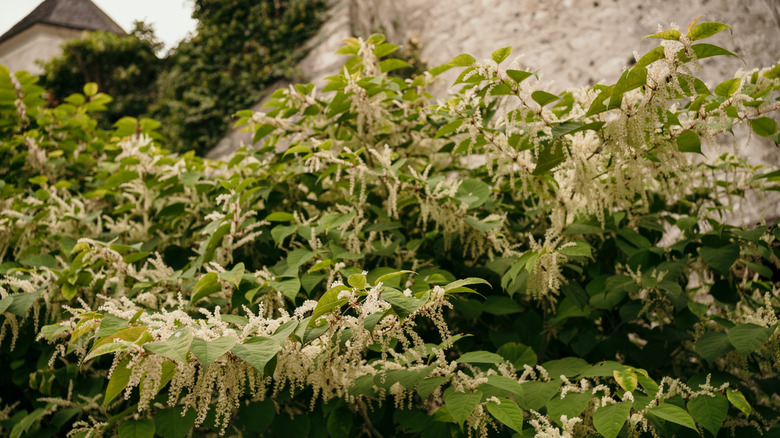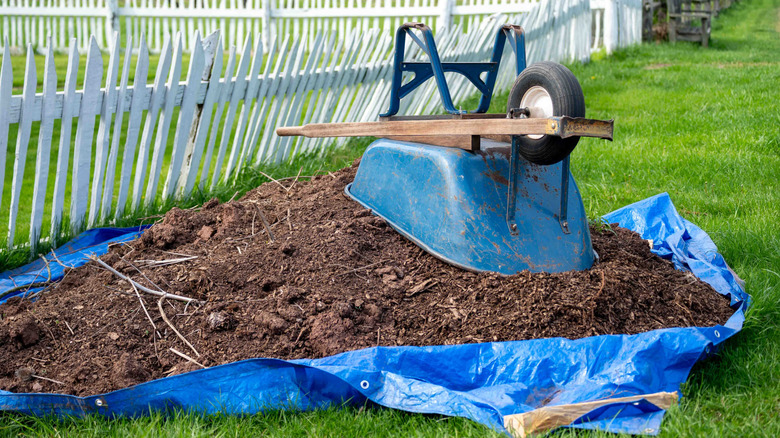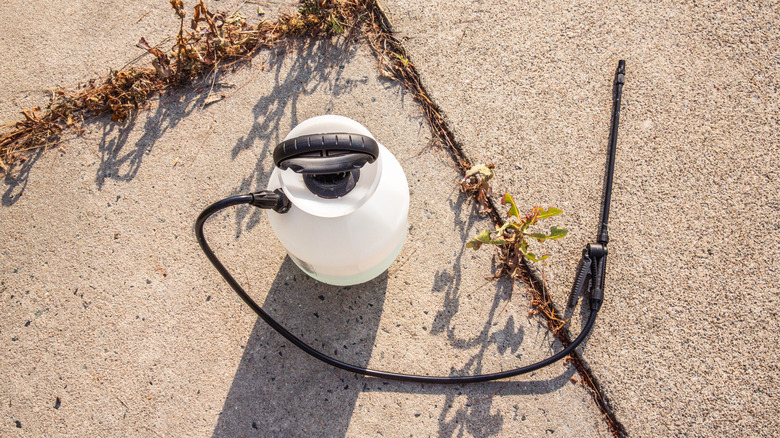How To Take Down Invasive Japanese Knotweed Before It Destroys Your Yard
Managing weeds in your yard can seem like an impossible task, but when those weeds are invasive, it can be even worse. Not only is Japanese knotweed (Fallopia japonica) invasive and damaging, but this notorious weed could tank your home's value before you sell. Many gardeners experience difficulty when trying to get rid of Japanese knotweed because it is particularly resistant to damage, and it spreads through underground rhizomes. It is a herbaceous perennial that can grow in USDA Hardiness zones 3 to 7. It grows quickly and can easily take over your yard or garden, reaching a height of up to 13 feet. Left uncontrolled, it can even damage your home by creating or worsening cracks in concrete.
Luckily, there are a few ways to take down invasive Japanese knotweed before it destroys your yard for good. Catching it early is best, because it is much easier to simply smother the plant. However, there are herbicide sprays that can help kill the weeds if it has gotten out of control.
Removing small sections of Japanese Knotweed
Cutting and discarding the plant is a disposal mistake that just makes the problem worse. Instead, for small areas, you can use the smothering method. To get started, you will want to cut down the stems to the ground. But don't just discard the foliage. Instead, place them on a surface that will not be impacted by the weeds. Generally, pavement, plastic, or a tarp works fine. Leave them here until they are completely dry. You can discard or compost the stems after they turn brown. If you do it before that, the plant will continue to spread.
After the stems have been cut down, you need to smother the entire area with a plastic tarp. For best results, use a dark color that is about a quarter of an inch thick. The tarp should extend past the impacted area by at least 5 feet. Then, weigh down the tarp and seal it completely using your preferred cover. Some options include rocks, soil, sand, or mulch. Here's the hardest part: you must leave the tarp in place for five years before attempting to replant in the area. You can also try this method if you don't want to spray herbicide in your yard, but because it takes years to complete the process, so it is not usually suitable for larger areas.
Removing large areas of invasive Japanese Knotweed
For larger areas, you'll have to try spraying chemicals to keep Japanese Knotweed out of your garden. Using an herbicide is the fastest, most effective method, and it is recommended by most gardening experts. The best option for controlling Japanese knotweed is glyphosate. It is worth noting that areas near water may have local laws and regulations regarding its application that you should be aware of. When in doubt, contact a professional.
There are two methods of herbicide treatments you can use to get rid of Japanese knotweed. Both options take at least two seasons to fully eradicate the plant. The first is to cut down the stems in June. Again, make sure stems are fully dry before disposing of them. Then, spray with the herbicide in the fall, at least eight weeks after cutting when the new stems start to bloom. This is the most effective treatment because the blooming naturally carries the herbicide down to the roots. Alternatively, you can spray the plants in the spring and fall without the cutting, but this is generally less effective.


